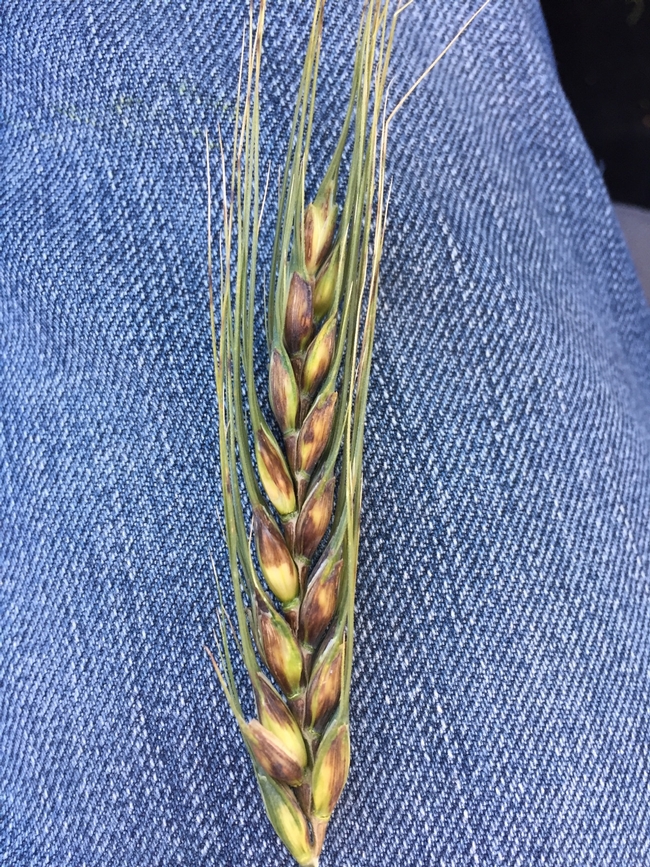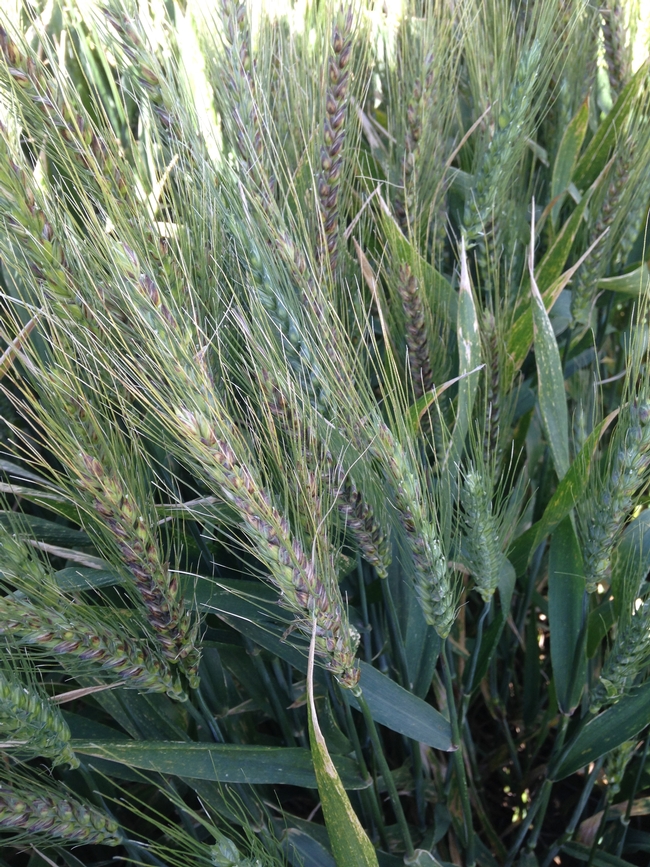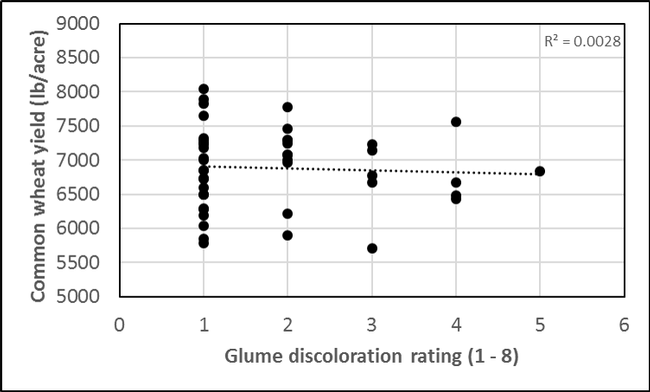As noted during our May 11th Field Day presentation in Davis, during the 2016-17 season darkening/purpling glumes (as depicted in Image 1) were widely observed in common spring wheat both within the UC Regional testing program and by growers and crop consultants around the San Joaquin and Sacramento Valleys. In addition, these symptoms appeared to have a genetic link because particular wheat varieties consistently displayed symptoms in multiple locations, while others displayed none.
There are multiple potential causes for darkened glumes, some pathogenic and some physiological. Cassandra Swett, the UC Cooperative Extension Specialist in Vegetable and Field Pathology, worked with a subset of samples collected from UC trials that displayed symptoms and recovered no known pathogens. A second hypothesis proposed by UC Davis diagnosticians and breeders was that the symptoms may be a condition referred to as pseudo-black chaff/false black chaff/melanism. This is a physiological condition associated with the presence of the stem rust resistance gene Sr2 that results in the deposition of melanoid pigments that discolor the glumes in the wheat head and, in severe cases, in the stem below the head. More information on this can be found here, here and here. This is a compelling explanation because of the apparent genetic association of symptoms observed in UC trials and the fact that those symptoms closely track descriptions of pseudo black chaff. The effect of pseudo black chaff on yield has not been clearly established.
Independent of whether the glume symptoms observed in California this season are pseudo black chaff, the UC common wheat trial at our Kings County location provided an opportunity to test whether these symptoms were associated with a yield decline. The glume symptoms at this site were extreme in certain varieties, mild in other varieties and absent in many varieties. In late April, we rated the percentage of the head that was discolored for each variety on a scale of 1-8 (1 = 0-3%; 2 = 4-14%; 3 = 15-29%; 4 = 30-39%; 5 = 50-69%; 6 = 70-84%; 7 = 85-95%; 8 = 96-100%). For reference, the plots in the photographs included here received a rating of 5.
Figure 1. Depicts the relationship between glume discoloration ratings recorded in late-April 2017 and end of season yield at the 2016-17 UC common wheat trial in Kings County. Ratings were recorded on a scale of 1-8 (1 = 0-3%; 2 = 4-14%; 3 = 15-29%; 4 = 30-39%; 5 = 50-69%; 6 = 70-84%; 7 = 85-95%; 8 = 96-100%).
Using our preliminary yield data from this recently harvested site, we examined the relationship between yield and our glume discoloration rating from late-April. Based on these data, there does not appear to be a quantitative relationship between the glume discoloration symptoms and wheat yield (Figure 1). Once we have finalized our yield estimates across the entire statewide trial and had the opportunity to explore this relationship across the entire dataset, we will be able to confirm this initial conclusion. However, because these symptoms were observed on several widely grown varieties causing concern among the California small grain community, we wanted to inform our stakeholders of this preliminary conclusion based on the trial data we have available at present.


